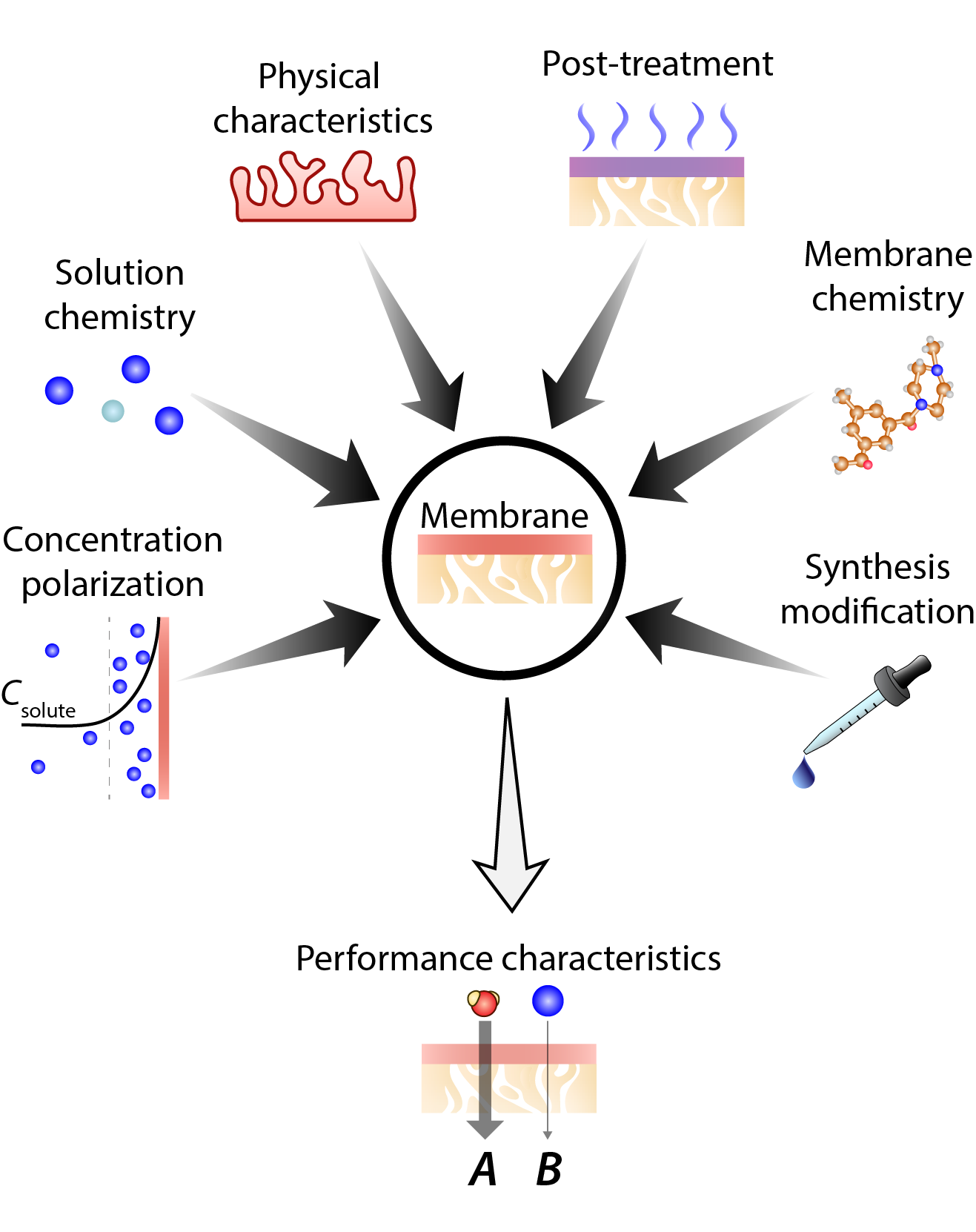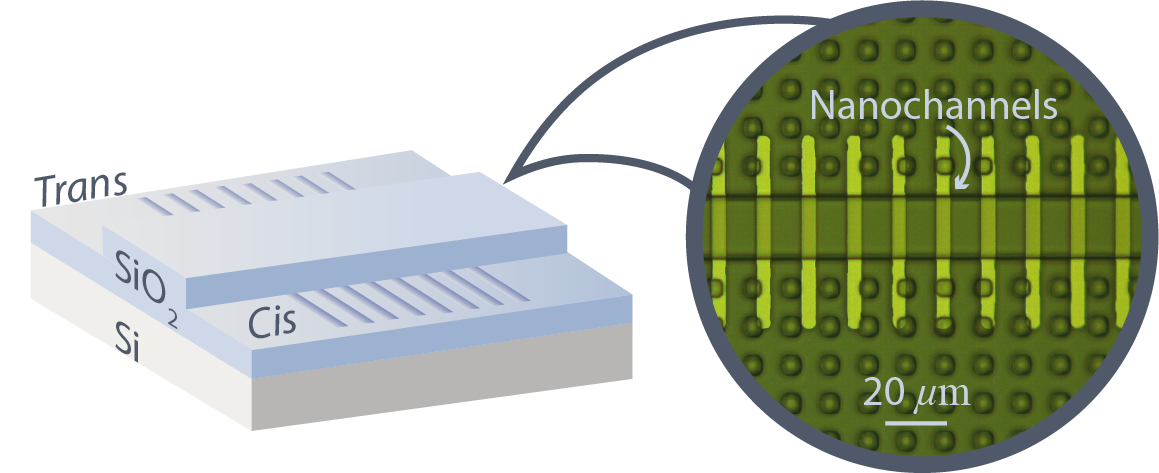Sustainable Separations
membrane-based separations necessary for global water and energy security
Escalating populations, rapid industrialization, and climate change have imposed unprecedented pressures on global resources—with expanding water and energy demands at the heart of these pressures. Limiting post-industrial global warming to 1.5 °C by the end of the 21st century is paramount for sustaining humanity, and meeting this call requires a societal transition to over 70% renewable energy by 2050. Advancing selective separations, particularly those of the aqueous domain, is critical to accelerating the energy transition due to their intensive use in nearly all industrial processes and their role in water security efforts. Various technologies will be needed to meet climate goals, but the versatility and efficiency of membrane-based separations makes them favorable for addressing challenges at the water–energy nexus. The increased complexity of new-age water resources that were once considered waste, but are now necessary targets of valorization (e.g., industrial brine), demands materials that are selective, modular, and resilient.
Designing the next generation of membranes needed for climate resiliency is currently limited by the empirical approaches and conventional materials used to drive innovation. However, recent advances in nanotechnology and materials science offer opportunities to achieve new paradigms in membrane design. During my PhD research, I sought to elucidate synthesis–structure–performance relationships in conventional- and novel-material based membranes, contextualizing how these fundamental relationships can be exploited to improve practical water treatment processes.
Overall, my interests are in transport phenomena unique to extremely confined environments (<10 nm) that are relevant to separation technologies for water and energy applications. Developing these fundamental relationships, which require techniques that radically contrast the traditional Edisonian approach, are critical for the bottom-up design of highly effective separation materials.
Schematic illustration of various membrane properties, treatments, and process conditions that influence membrane performance characteristics, such as water and salt permeance (A and B, respectively). Image taken from C.L. Ritt et al., J. Membr. Sci. (2022).
Illustration of 2D polyaramid pore realignment to enable ion-selective transport. Inspired by work from C.L. Ritt et al., (Submitted to Science).
Novel Material Design
designing ion-selective materials require New materials and approaches
For water treatment purposes, ultraselective membranes can enable precise control over the makeup of permeate and brine streams for complex feed solutions. This level of control could enable more sustainable water treatment by tailoring the treatment to the desired end use and would substantially reduce chemical and energy consumption, ultimately lowering the treatment cost for water production. In addition, fit-for-purpose membranes would improve recovery efforts for critical energy minerals (e.g., lithium or cobalt), sensor devices, and proton selectivity in fuel cells and water electrolyzers.
During my PhD, I employed machine learning to assess the role of molecular-level features in ion selectivity measured across nanoporous polymer membranes. Our analysis identified entropy-enthalpy compensation as a design bottleneck for ion selectivity in these materials due to the dynamic nature of segmental polymer chains. These limitations can be circumvented by using materials with rigid, engineered pore structures, such as those found in 2D polyaramids.
Nanofluidics
Solid-state nanofluidic devices as model systems
We lack a holistic understanding of many fundamental transport mechanisms that occur in nanoporous systems. This is particularly prevalent for charge-based phenomena. In industrially relevant polymer-based systems where charge can greatly influence performance (e.g., membranes used for resource recovery, desalination, and electrolysis), the sensitivity of polymeric matrices to their environment makes it difficult to deconvolute highly coupled transport phenomena and extract useful insight. Conversely, solid-state devices offer well-defined and precisely controlled platforms for studying nanofluidic ion transport that, with recent advances, show promise to be extended to mirror transport in nanoconfined polymeric systems.
Illustration of solid-state nanofluidic device, which is composed of an array of 20-nm high, 4-μm wide, and 20-μm long nanochannels that separate the cis and trans reservoirs where electrolyte solutions are exchanged. The optical topographic image (right) shows the nanochannels prior to etching. Image taken from C.L. Ritt et al., ACS Nano (2022).
Conceived plant nanobionic approach, where nanoparticles that can catalyze pollutant metabolism are multiplexed with near-infrared (nIR) fluorescent nanosensors within plant leaves. The resulting nanobionic system can enable real-time monitoring of pollutants as they appear and are subsequently degraded. Images in the figure are adapted from T.T.S. Lew et al., Adv. Mater. (2021) & E. Voke et al., ACS Sensors (2021).
Plant Nanobionics
plant nanobionics can accelerate the development of phytoremediation technologies
There are over 5 million brownfield sites globally that require remediation and redevelopment. While many approaches exist to address this issue, traditional brownfield remediation technologies possess a high carbon footprint and are often hindered by their high cost. Phytoremediation is an inherently carbon negative process that is self-sustaining, cheap, and can address a wide variety of environmental contaminants. However, the current generation of phytoremediators are slow and limited to select growth conditions, leaving this process viable only for low-value lands.
Plant nanobionics is an emerging field that imparts non-native functions to plants by introducing nanoparticles. This approach benefits from its applicability to any wild-type plant without the need of genetic engineering, which is only applicable to a narrow range of plant species.
Plant nanobionic approaches can be used to develop next-generation phytoremediators that (i), remove contaminants quickly and selectively, (ii), store contaminants at high capacities, (iii), metabolize contaminants beyond their natural limits, (iv), possess stimuli responsive features, and (v), can autonomously monitor contaminants as they appear in the environment.




